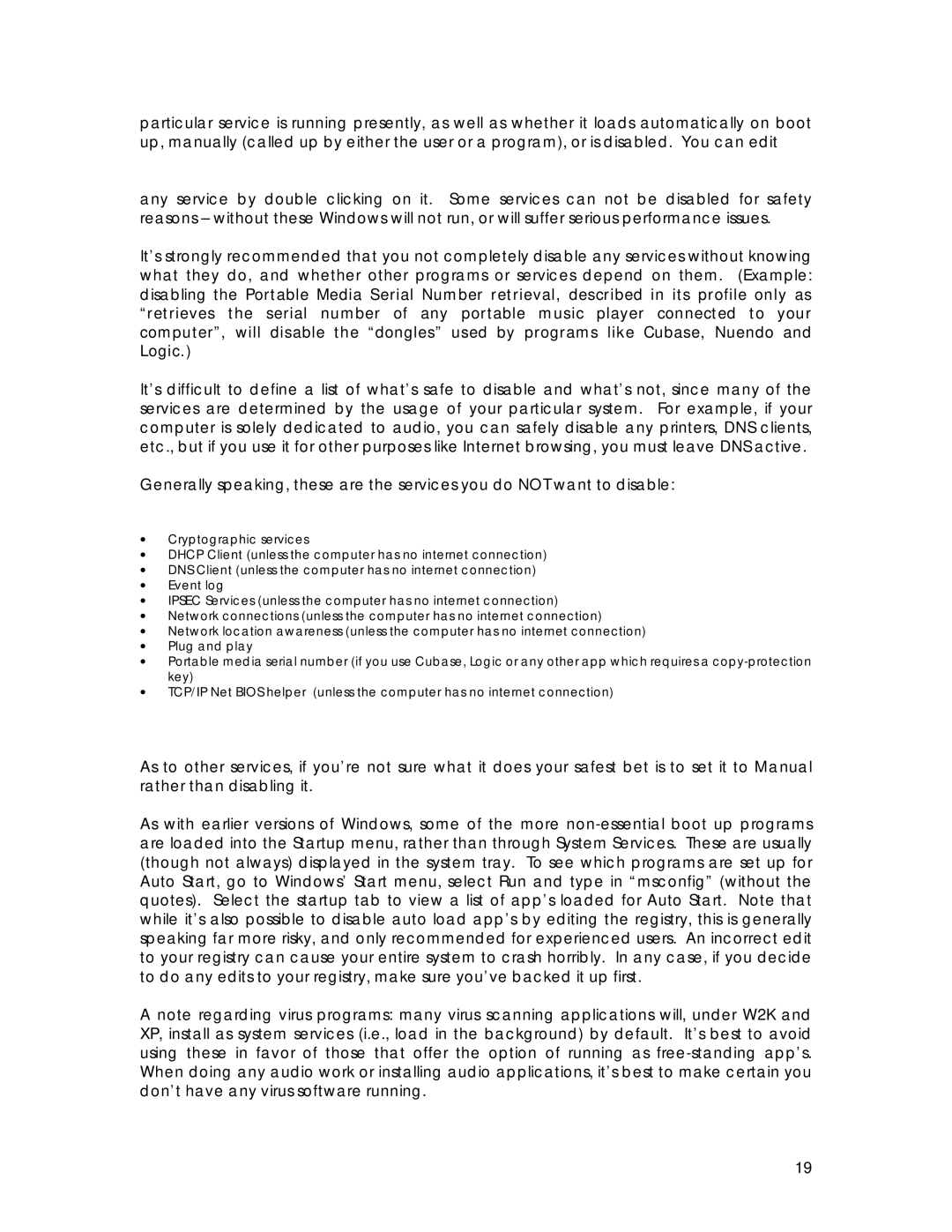particular service is running presently, as well as whether it loads automatically on boot up, manually (called up by either the user or a program), or is disabled. You can edit
any service by double clicking on it. Some services can not be disabled for safety reasons – without these Windows will not run, or will suffer serious performance issues.
It’s strongly recommended that you not completely disable any services without knowing what they do, and whether other programs or services depend on them. (Example: disabling the Portable Media Serial Number retrieval, described in its profile only as “retrieves the serial number of any portable music player connected to your computer”, will disable the “dongles” used by programs like Cubase, Nuendo and Logic.)
It’s difficult to define a list of what’s safe to disable and what’s not, since many of the services are determined by the usage of your particular system. For example, if your computer is solely dedicated to audio, you can safely disable any printers, DNS clients, etc., but if you use it for other purposes like Internet browsing, you must leave DNS active.
Generally speaking, these are the services you do NOT want to disable:
•Cryptographic services
•DHCP Client (unless the computer has no internet connection)
•DNS Client (unless the computer has no internet connection)
•Event log
•IPSEC Services (unless the computer has no internet connection)
•Network connections (unless the computer has no internet connection)
•Network location awareness (unless the computer has no internet connection)
•Plug and play
•Portable media serial number (if you use Cubase, Logic or any other app which requires a
•TCP/IP Net BIOS helper (unless the computer has no internet connection)
As to other services, if you’re not sure what it does your safest bet is to set it to Manual rather than disabling it.
As with earlier versions of Windows, some of the more
A note regarding virus programs: many virus scanning applications will, under W2K and XP, install as system services (i.e., load in the background) by default. It’s best to avoid using these in favor of those that offer the option of running as
19
